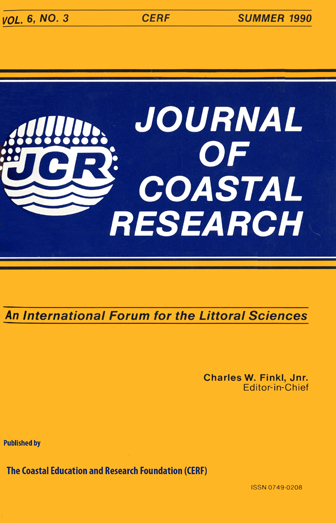Headland Erosion by Waves
Keywords:
Headlands, erosion, longshore transport, nearshore wave variability, eastern CanadaAbstract
The process controls associated with the erosion of marine headlands have been debated by May and Tanner (1973) and Komar (1985). Opinions vary as to the evolutionary sequence of headlands. Field measurements at two headland sites in Nova Scotia reveal an apical drift divergence and strong longshore gradients in wave heights, breaking angles and currents dispersing eroded material along the flanks. Although the potential for erosion is maximized at the headlands, it is the shoreline transport system which ultimately controls evolution of the headland, although the narrow needle-like promontories predicted by May and Tanner are, in reality, unlikely to form everywhere due to wave field variability. At both field sites, the downdrift sorting and partitioning of eroded sediment on a textural basis, together with a progressive decrease in the angle of wave approach leads to a reduction in transport potential, and thus a decrease in the rate of erosion.


